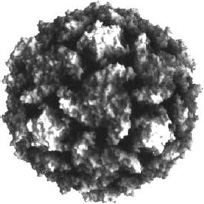Synthetic Biology: Synthesis and Modification of a Chemical Called Poliovirus
School of Medicine, SUNY–Stony Brook, Stony Brook, NY 11974, U.S.A.
Dept. of Computer Science, SUNY–Stony Brook, Stony Brook, NY 11974, U.S.A.
1. Introduction
Synthetic biology is a newly emerging scientific discipline, encompassing knowledge of different disciplines such as engineering, physics, chemistry, computer sciences, mathematics, and biology.1 Synthetic biology aims to create novel biological systems with functions that do not exist in nature. There seem infinite possibilities of constructing unique derivatives of existing organisms (bacteria, yeast, viruses). Apart from designing novel building blocks for engineering biological systems, a fundamental requirement in synthetic biology is the ability of large-scale DNA synthesis and DNA sequencing.
Viruses can be described in chemical terms; the empirical formula of the organic matter of poliovirus being2
C332,652H492,388N98,245O131,196P7,501S2,340.
There might be little practical use in describing poliovirus by an empirical formula, but it persuasively portrays the virus as a chemical. Placing these atoms into order, particles of high symmetry emerge,3 see Fig. 1. These particles can be purified and crystallized.

Figure 1. Computer model of poliovirus, ...
Get Future Trends in Microelectronics: Up the Nano Creek now with the O’Reilly learning platform.
O’Reilly members experience books, live events, courses curated by job role, and more from O’Reilly and nearly 200 top publishers.

